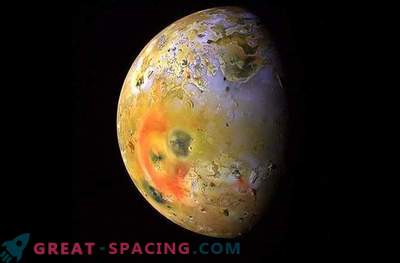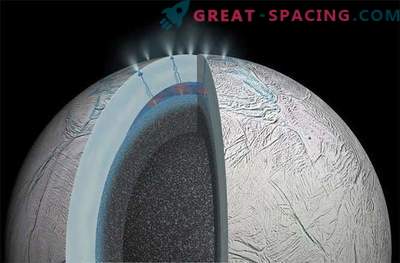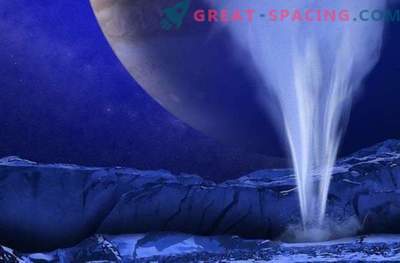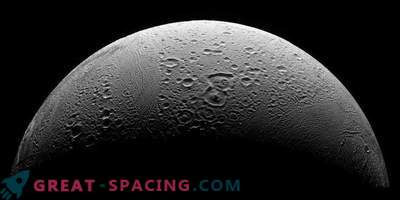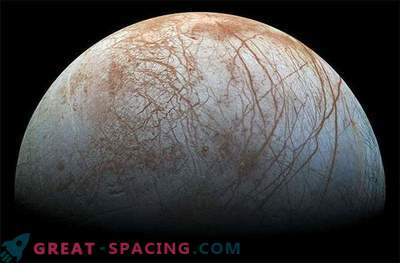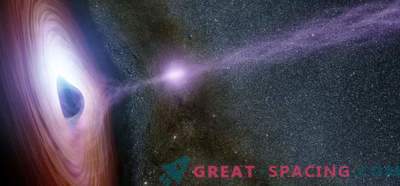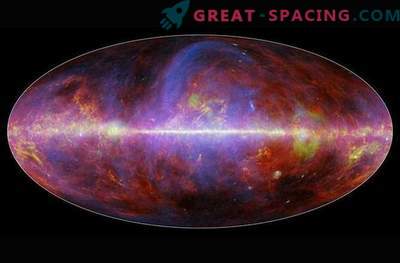
Cassini and the Hubble Space Telescope let you learn new details about the icy ocean satellites of Jupiter and Saturn. Details are disclosed in a study published on Thursday.
On Enceladus (Saturn) noticed chemical energy that can fuel life. The study indicated that its potential source could be hydrogen gas. It flows into the subterranean ocean of the moon due to hydrothermal activity at the bottom. Having a large amount of hydrogen is very important. If there are microbes in the ocean, they can use it to produce energy by combining hydrogen with carbon dioxide dissolved in water. This reaction is called “methanogenesis” because methane eventually appears. In the earthly version, he was crucial to the formation of life.
For the emergence of life you need three components: liquid water, a source of energy for metabolism and a suitable set of chemical ingredients (carbon, hydrogen, nitrogen, phosphorus, oxygen and sulfur). The Cassini mission demonstrated that Enceladus, a small icy satellite, has almost all of this set. So far there is no data on the presence of sulfur and phosphorus, but researchers think that the stone core of the moon by chemical composition should resemble meteorites (in which they are).
Hydrogen was found in the gas stream and ice material. Cassini managed to catch him during the last and deepest dive through the train (October 28, 2015). Previously, the device has already taken samples and it turned out that 98% of the gas is 1% of hydrogen, and the rest is a mixture of various molecules (carbon, methane and ammonia). For the measurements, a special instrument INMS was used, which examines gases to reveal the composition.
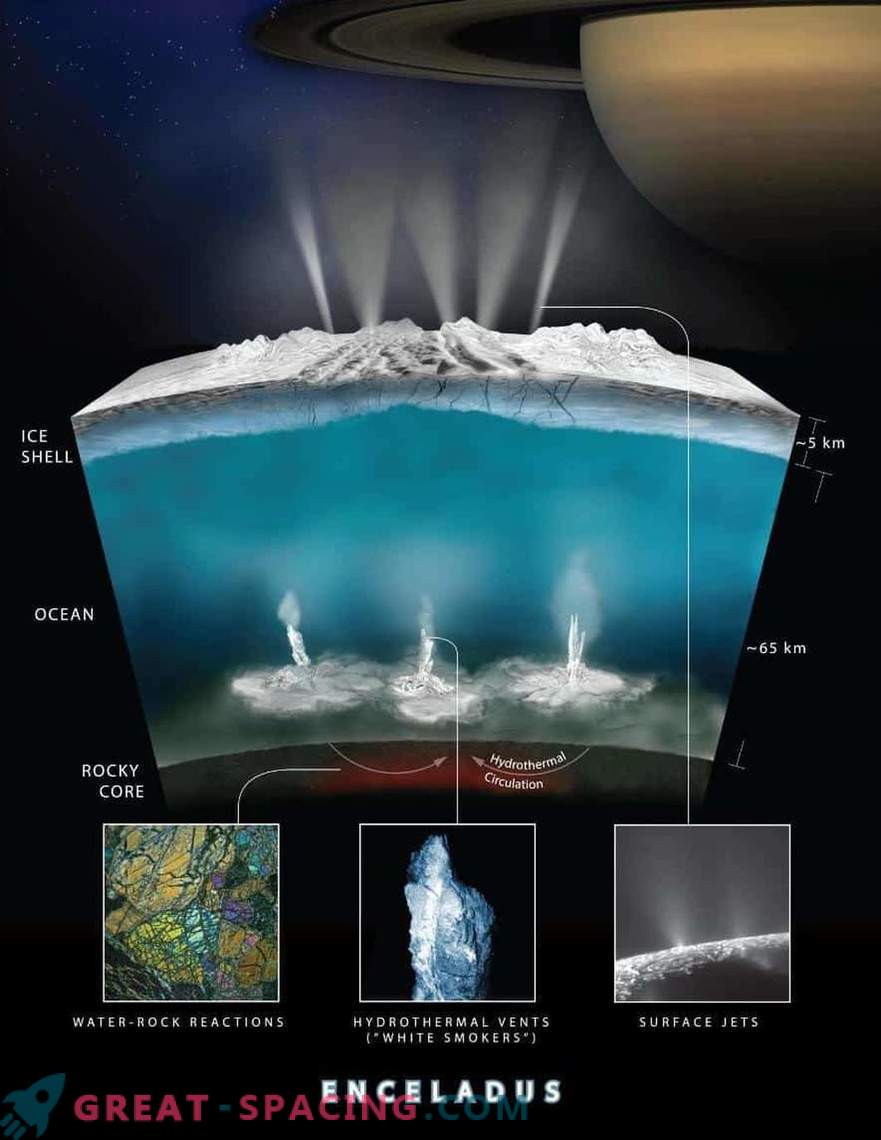
This is an illustration of the scientists' suspicions about the interaction of water with a rock in the lower part of the ocean of Enceladus.
It is worth noting that Cassini’s mission did not include a mission to detect life in the Enceladus train. Scientists learned about its existence after the device flew up to Saturn. And although the researchers have not received direct evidence of life, they see the source of its appearance. The data show that hydrothermal activity occurs in the ocean. The results of 2015 (March) indicated that the hot water was in contact with the rock of the rock at the depth, which is why hydrogen is formed.
The interest is also attracted by the moon of Jupiter Europe. In 2016, scientists captured a plume of material that erupted in the same place where it was spotted in 2014. Therefore, they began to talk about the periodicity of the phenomenon.
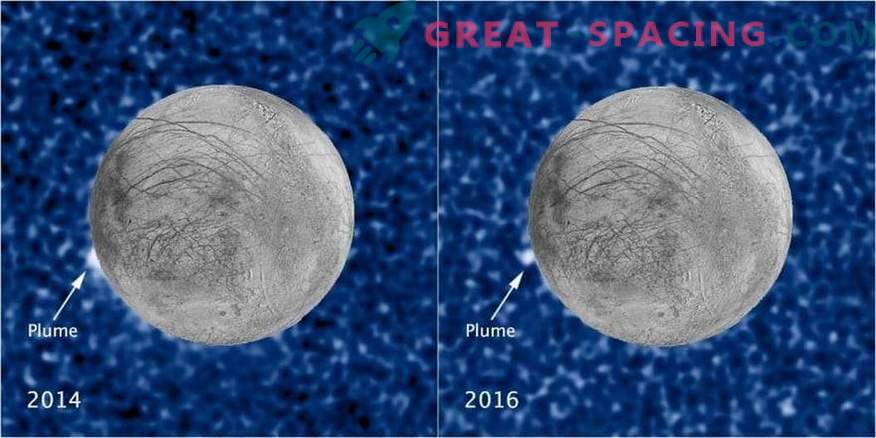
The photograph shows a suspicious plume of material, appearing two years in a row at the same place in Europe. Both shot in the ultraviolet light of Hubble when the satellite passed in front of Jupiter.
The height of the new cable reached 100 km, and in 2014 only 50 km. This place is located in a warm region and may be a crack in the ice crust found by the Galileo apparatus in the 1990s. This may indicate that here, too, water makes its way to the surface.
Loops on Enceladus were located in hot areas. Therefore, scientists took a map of the temperatures of Europe, made by Galileo, and saw that its trains are also in the zone of thermal anomaly. Jets and warm spots can be connected, which means the ejected water begins to heat the surface. Or it turns into a fog and allows the heat to last longer.

Green oval - emissions observed by Hubble in Europe. This site corresponds to the warm regions of the satellite (created according to the observations of the Galileo apparatus).
All this data gives hope to the exploration of oceanic worlds that may contain life. Therefore, by 2020, NASA is going to launch the Europa Clipper mission. A place of unstable constant emissions activity is an attractive target. For her, they plan to use a powerful set of scientific tools. It is possible that the device will also install an ultraviolet camera, as in Hubble, but it can take pictures thousands of times closer.
